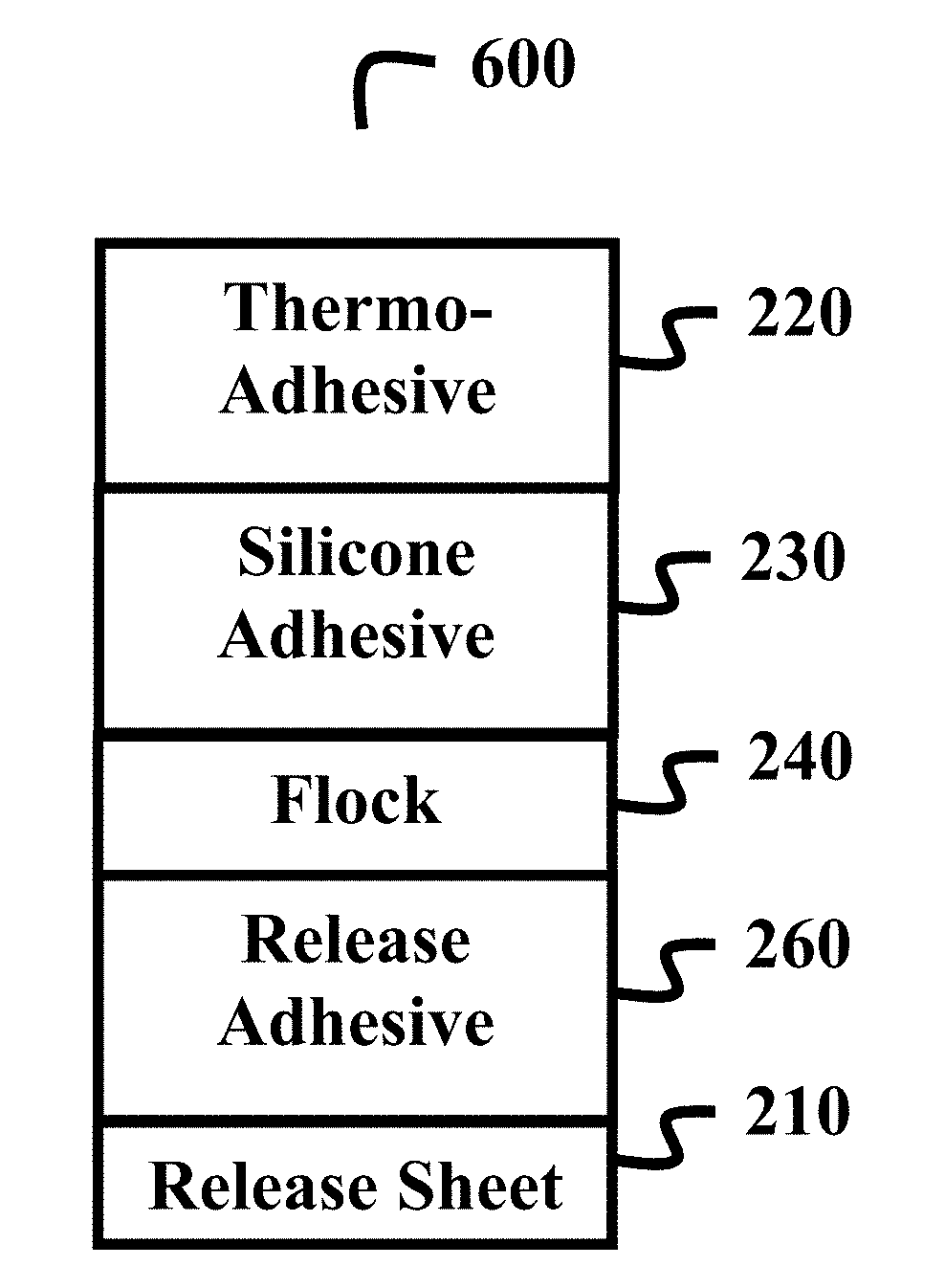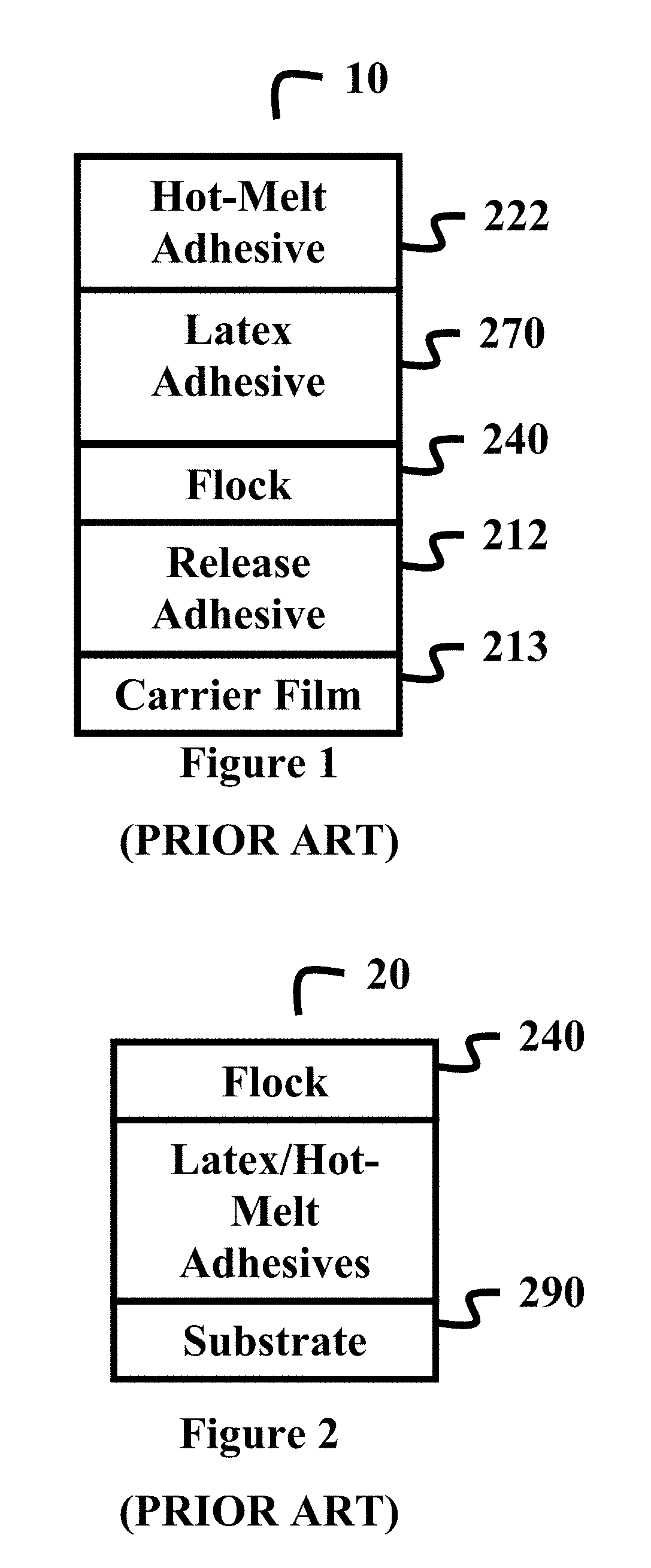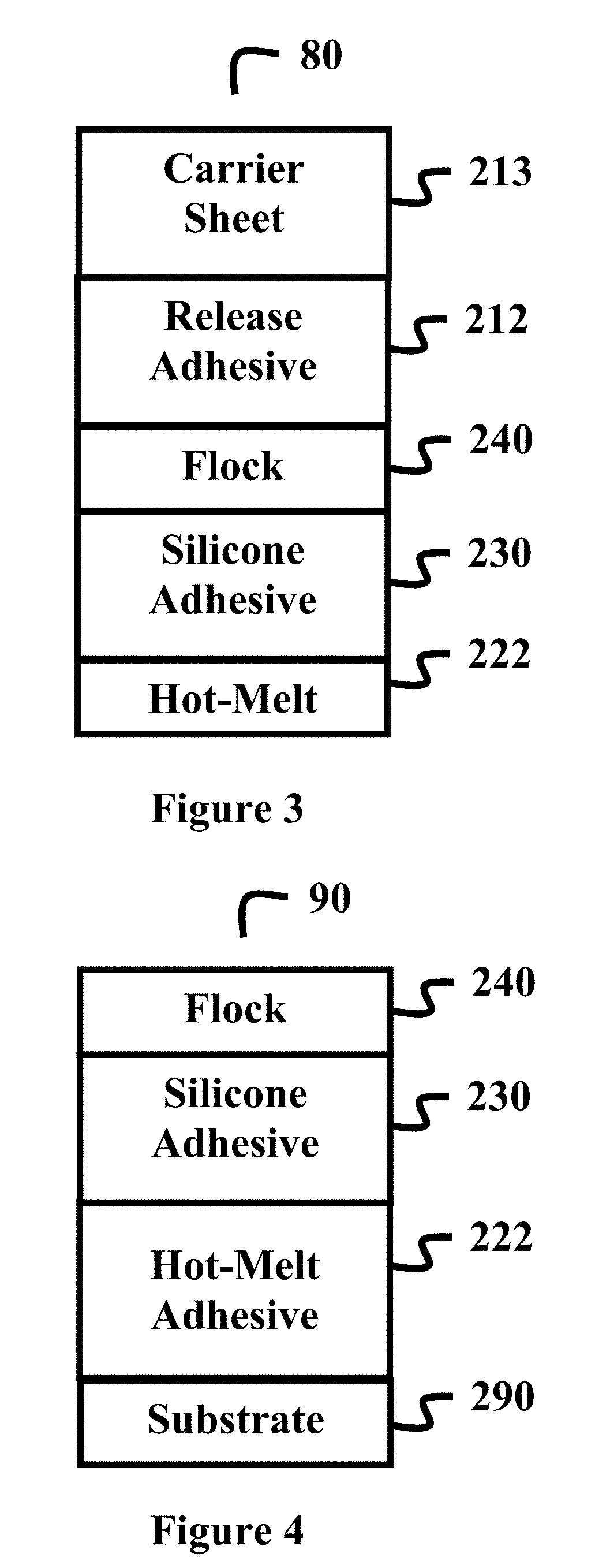Flocked products having a silicone adhesive composition and methods of making and using the same
a silicone adhesive and composition technology, applied in the field of flock transfers and appliques, can solve the problems of product rejection, product delay, product rejection, and serious disadvantages and functional limitations, and achieve the effects of reducing catalyst poisoning, reducing product opacity, and reducing product opacity
- Summary
- Abstract
- Description
- Claims
- Application Information
AI Technical Summary
Benefits of technology
Problems solved by technology
Method used
Image
Examples
Embodiment Construction
[0074]In some embodiments, the flocking adhesive comprises a silicone adhesive. In some embodiments, the flocking adhesive is a silicone adhesive. The silicone adhesive can have a higher melt point compared to a latex adhesive. Moreover, flock fibers adhered to a silicone adhesive tend be less, or not at all, matted down due to the silicone adhesive than the latex adhesives of the prior art. As such, the flock fibers are less inclined, if not at all, to be matted down in the silicone adhesive when compared to a non-silicone adhesive, such as a hot melt adhesive and / or latex adhesive. Furthermore, the flock fibers are less inclined, if not at all, to be matted down around the edges of the adhesive film, thereby, having a cleaner more defined flocked product edge. Silicone adhesives generally heat cure and / or thermally set more quickly than the typical prior flock latex and / or hot melt adhesives. The shorter silicone adhesive cure and / or thermal set times allow for one or more of incr...
PUM
| Property | Measurement | Unit |
|---|---|---|
| wt. % | aaaaa | aaaaa |
| wt. % | aaaaa | aaaaa |
| process time | aaaaa | aaaaa |
Abstract
Description
Claims
Application Information
 Login to View More
Login to View More - R&D
- Intellectual Property
- Life Sciences
- Materials
- Tech Scout
- Unparalleled Data Quality
- Higher Quality Content
- 60% Fewer Hallucinations
Browse by: Latest US Patents, China's latest patents, Technical Efficacy Thesaurus, Application Domain, Technology Topic, Popular Technical Reports.
© 2025 PatSnap. All rights reserved.Legal|Privacy policy|Modern Slavery Act Transparency Statement|Sitemap|About US| Contact US: help@patsnap.com



